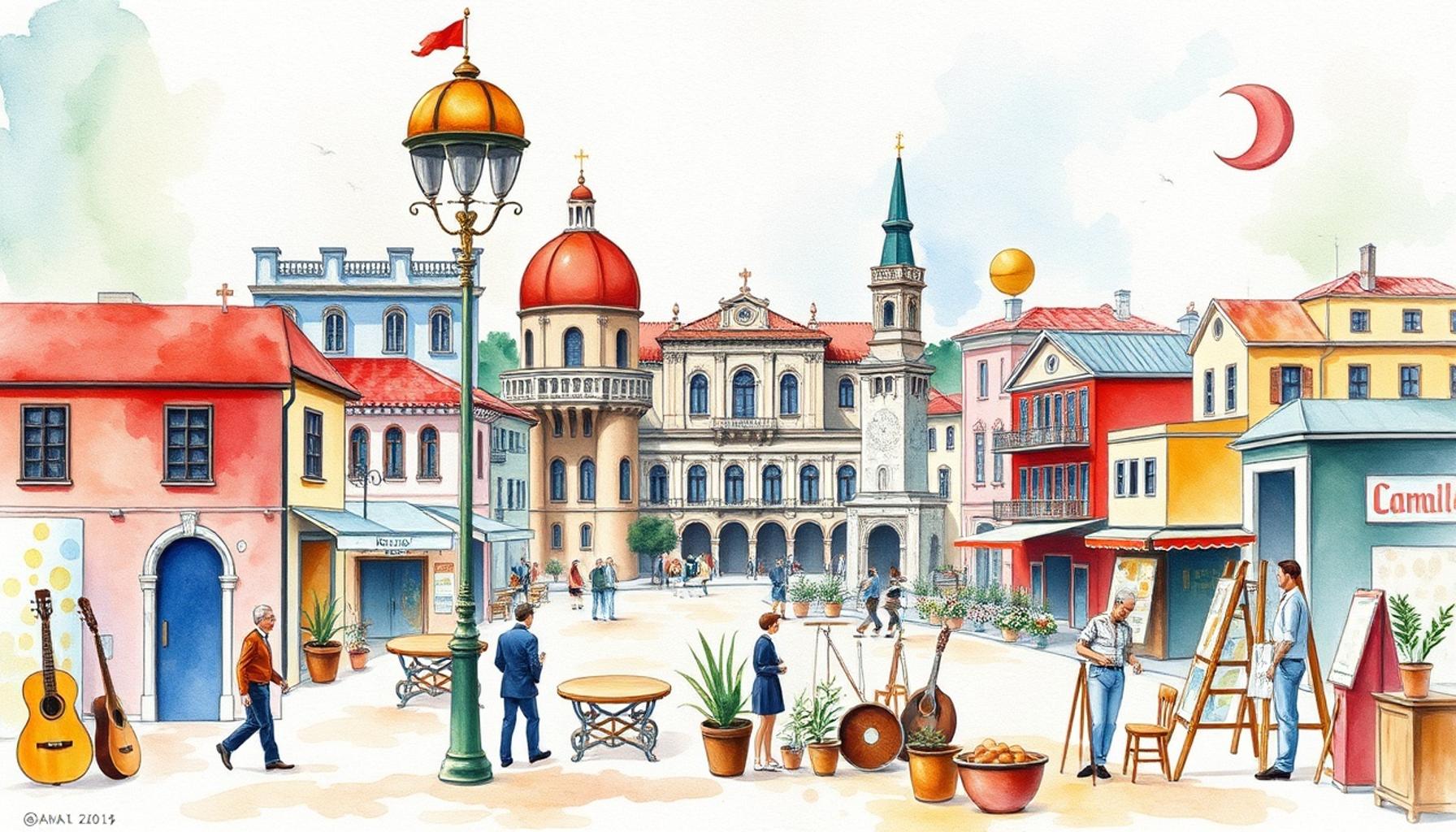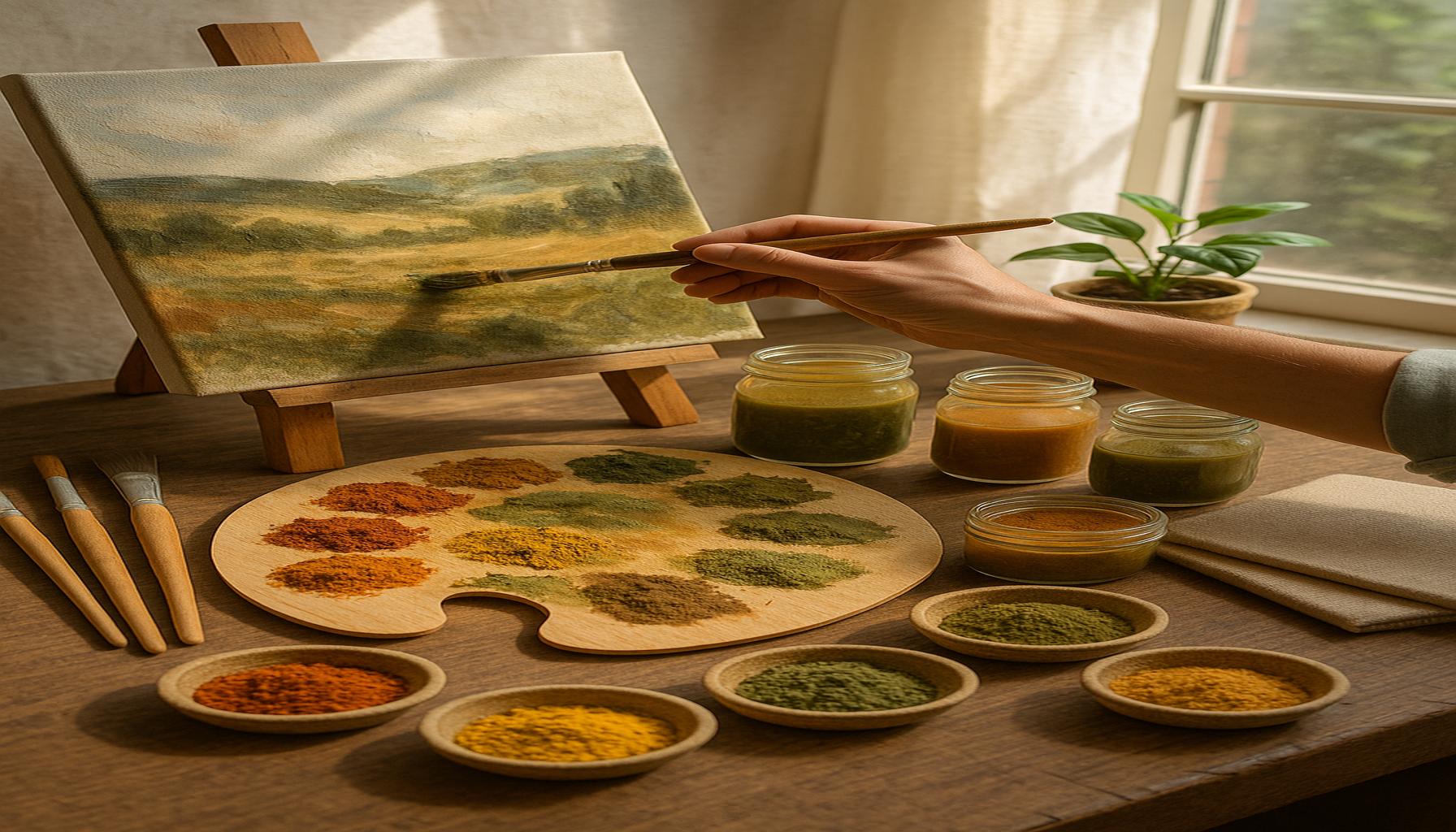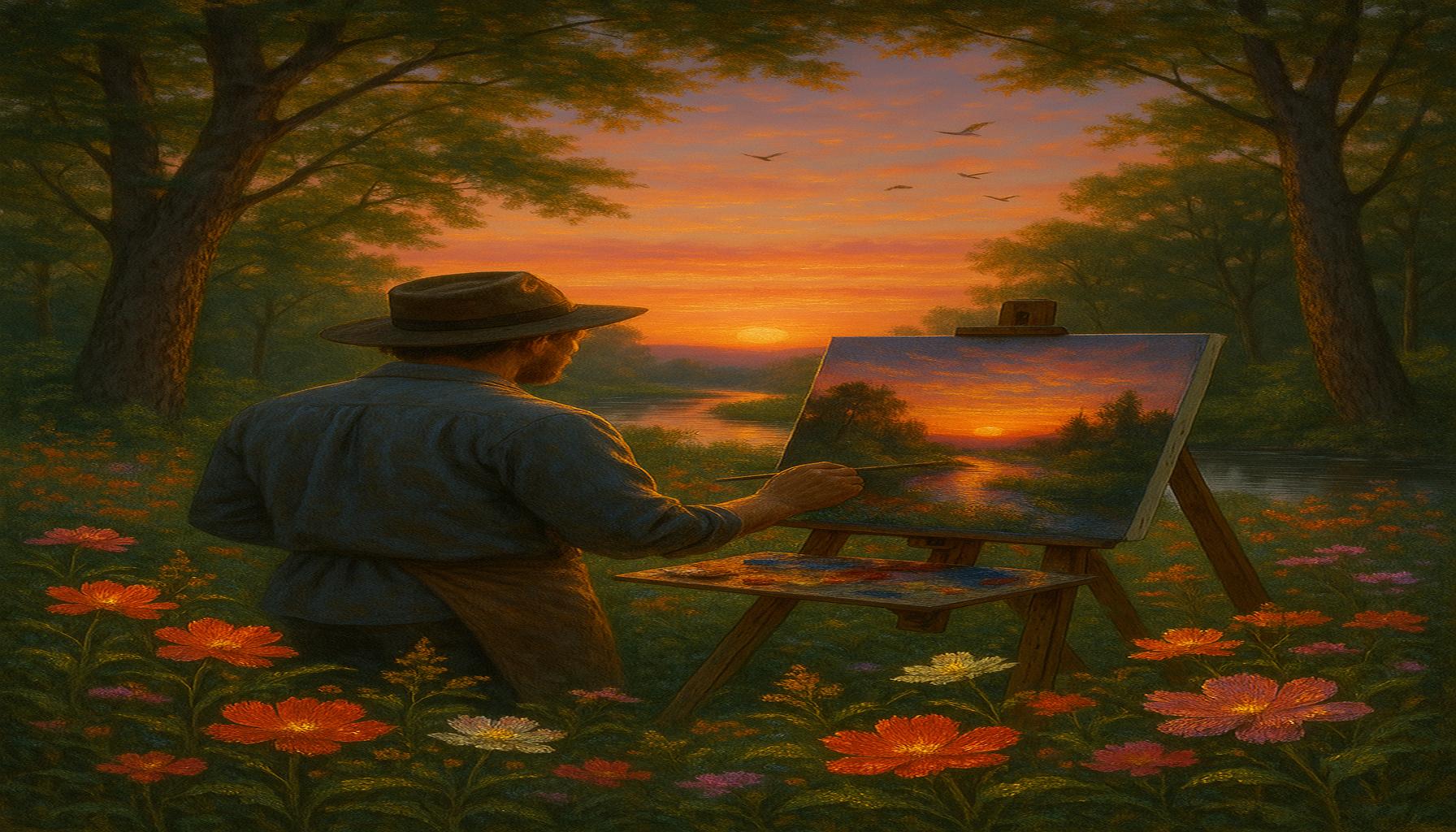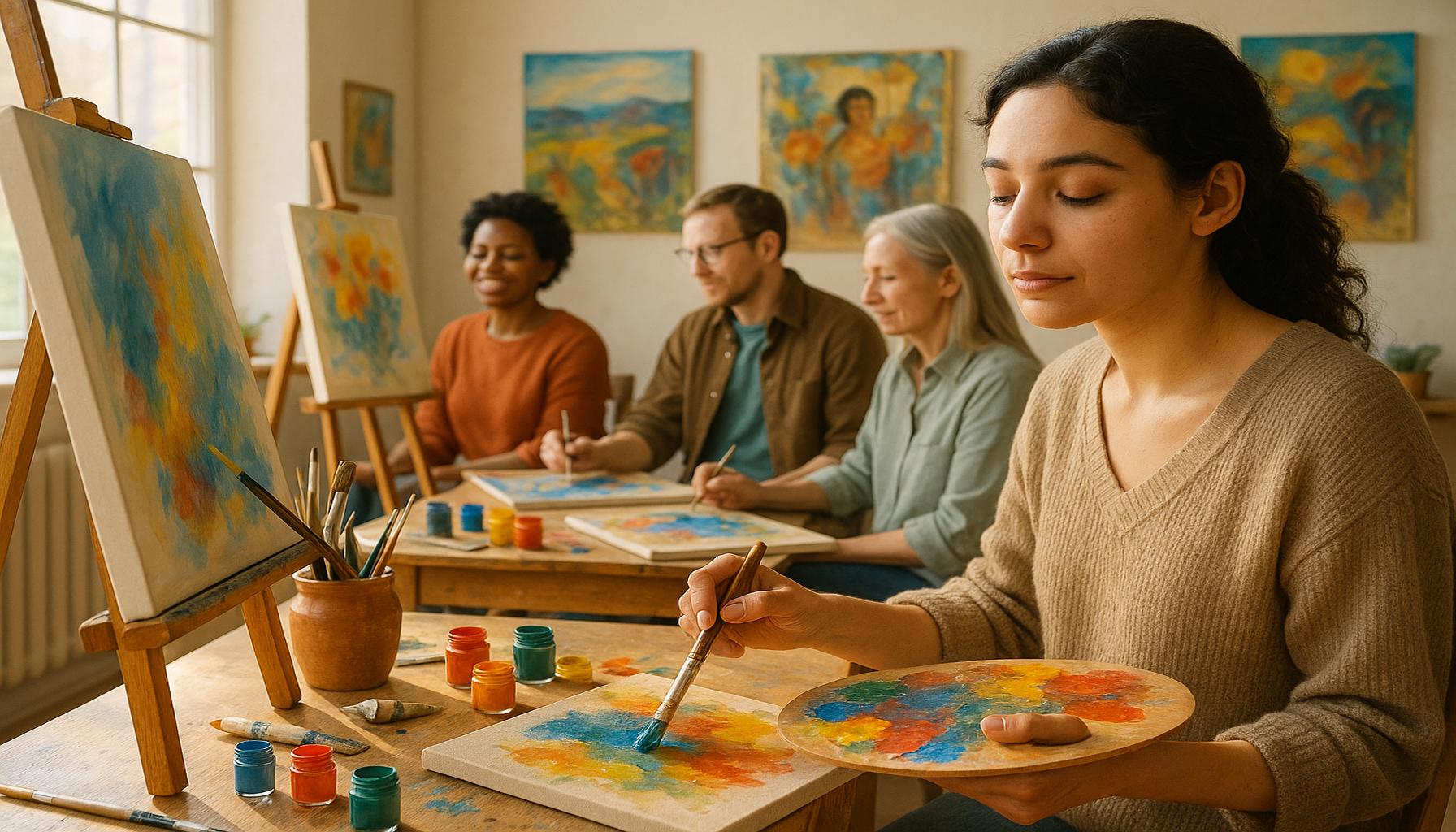The Evolution of Painting Styles Through the Decades: A Historical Perspective

The Transformational Influence of Painting Styles
Throughout history, painting has been a powerful medium for expressing ideas, emotions, and cultural narratives. Each decade brings its own distinctive styles and movements, reflecting societal changes and advancements in technique. Not only do these styles represent the artistic inclinations of their times, but they also serve as a barometer for the socio-political and economic climates in which they were formed.
The evolution of painting styles reveals a fascinating journey shaped by various influences. Key elements include:
- Historical Events: From the tumultuous times of the French Revolution to the societal unrest of the Civil Rights Movement in the United States, wars, revolutions, and significant changes have inspired artists to convey their responses to the prevailing conditions. For instance, Pablo Picasso’s famous work, Guernica, speaks volumes about the horrors of war and the impact on innocent lives, highlighting how artists have often depicted the chaos around them through their work.
- Technological Advances: The introduction of new materials, such as oil paints in the 15th century, revolutionized how artists could express themselves. Innovations like acrylic paints in the 20th century allowed for rapid drying and brighter colors, leading to new methods of application. Artists such as Andy Warhol utilized silkscreen technology to address themes of consumerism and pop culture, demonstrating how artistic technique evolves alongside technological progress.
- Cultural Exchange: Global interactions have enriched American art significantly. The infusion of Eastern philosophies and artistic styles into Western practices has led to unique combinations, such as the fusion of Asian aesthetics in the works of modern American artists. The Harlem Renaissance, for instance, not only highlighted African-American culture and identity but also created a dialogue between African and American art forms.
From the realism of the 19th century, where artists like Gustave Courbet focused on everyday scenes, to the dynamic and expressive brushwork of abstract expressionism led by figures such as Jackson Pollock, each movement offers unique insights into the human condition. The emotional turmoil captured in Van Gogh’s Starry Night and the energetic splatters of Pollock’s No. 5 showcase the diversity within the world of painting and how these styles remodel our understanding of art.
As we delve deeper into this exploration, you will uncover the intricate connections between art and the ever-changing human experience. Through examining trends, movements, and influential artists, we can better appreciate the dialogue between culture and creativity. Join us as we trace the historical perspectives behind the evolution of painting styles through the decades, inviting contemplation and perhaps even inspiration for contemporary creators.
DIVE DEEPER: Click here to discover the emotions behind colors
The Foundations of Artistic Movements
The rich tapestry of painting styles throughout the centuries demonstrates how art not only mirrors society but also shapes it. The 19th century marked a turning point with the emergence of various styles reflecting the significant social changes of the time. As industrialization transformed daily life and urban environments, artists began to seek new ways to represent reality. The emergence of realism, led by figures like Gustave Courbet and Édouard Manet, rejected the romanticized depictions of the past. Instead, they embraced everyday scenes, often highlighting the struggles of the working class and the underrepresented in society. Courbet’s provocative pieces, such as The Stone Breakers, exemplified this movement’s commitment to portraying hard truths and challenging the status quo.
The late 19th century saw the rise of impressionism, characterized by its loose brushwork and emphasis on light and color. Artists like Claude Monet sought to capture fleeting moments and the essence of a scene rather than its precise details. This marked a significant departure from the meticulously detailed styles of previous eras, pushing the boundaries of what was considered ‘art.’ Impressionism paved the way for subsequent movements, encouraging artists to explore personal perception and experience. As the movement gained momentum, it also ignited debates about artistic authenticity and the role of the artist within society.
Fast forward to the early 20th century, and the art world was buzzing with innovation. The avant-garde movement birthed radical approaches to painting, with movements like cubism challenging traditional perspectives. Spearheaded by Pablo Picasso and Georges Braque, cubism fragmented subjects into geometric shapes, compelling viewers to engage with multiple viewpoints simultaneously. This departure not only redefined composition but also encapsulated the rapid progress of modernity and the complexities of the human experience in a shifting world.
As we navigate through the decades, we also witness the emergence of expressionism in the early 20th century, reacting against the perceived coldness of realism and the disjointedness of cubism. Munch’s The Scream epitomizes this style, showcasing raw emotional content and a deep understanding of the human psyche. Similarly, artists such as Wassily Kandinsky and Egon Schiele experimented with abstraction, reflecting deeper existential concerns and the internal struggles faced by individuals in an increasingly chaotic world.
The societal upheaval of the mid-20th century, including the turmoil of World War II, saw the birth of abstract expressionism, led by artists like Jackson Pollock and Mark Rothko. This emerging style emphasized spontaneity, allowing emotion and intuition to dictate creation rather than premeditated composition. Pollock’s iconic drip paintings challenge conventional definitions of art, placing the act of painting itself as central to the experience rather than the finished product.
In examining these foundational movements, it is clear that painting has continually evolved in response to both cultural shifts and technological advancements. As the 20th century unfolded, artists began to draw inspiration from a wider array of influences, leading to a rich pluralism in style and technique. This trajectory invites us to consider how these transformations have influenced contemporary art practices today, as the legacy of past movements continues to inform the artistic narrative.
The Shifting Tides of Artistic Expression
The evolution of painting styles throughout the decades reflects not just the aesthetic choices of artists but also the currents of history, societal changes, and technological advancements. Each decade brought with it a unique set of influences that shaped how artists viewed the world and depicted their surroundings. In the 1920s, the rise of *Modernism* challenged traditional conventions, giving way to abstract forms and liberated techniques. The emergence of artists like Pablo Picasso introduced the world to *Cubism*, where multiple perspectives fused together to create a cohesive narrative. This revolutionary approach invited viewers to reconsider the essence of reality itself.Following this, the 1950s revealed the vibrant colors and energetic brush strokes of *Abstract Expressionism* with figures such as Jackson Pollock leading the charge. This movement focused on individual expression and the subconscious, marking a stark departure from previous art forms. Pollock’s technique of dripping paint onto canvas epitomized the era’s emphasis on spontaneity and raw emotion.
The Cultural Reflections in Art
Each painting style is a window into its respective decade, reflecting cultural, political, and technological developments. For instance, the 1960s witnessed the birth of *Pop Art*, as artists like Andy Warhol celebrated consumerism and popular culture. This movement, with its bright colors and bold imagery, not only mirrored the societal obsession with mass production but also critiqued the commercialization of art itself. The rise of *feminist art*, driven by groundbreaking artists like Judy Chicago, began to challenge patriarchal narratives in the 1970s, emphasizing women’s roles in both society and art.Furthermore, as technology advanced, so did artistic methods. The invention of acrylic paint and the use of mixed media incorporated new dimensions into painting. Artists from the late 20th century onward began to blend digital technology with traditional techniques, leading to the emergence of contemporary styles that continue to evolve today.The flavor of each decade provides vital insight into the cultural dialogues of the time, demonstrating how art remains an integral aspect of human expression. It invites us to explore deeper connections between artwork and the societal contexts from which they arise, making the study of painting styles not just an exploration of visuals, but a historical investigation into human experience.
| Category | Advantages |
|---|---|
| Modernism | Encourages innovative approaches and breaking from tradition. |
| Pop Art | Enhances engagement with cultural and consumer dynamics. |
By examining these distinctive movements, we gain a deeper understanding of the complexities and motivations behind each era’s artistic expression, inviting further inquiry into the relationship between art and society.
DISCOVER MORE: Click here to dive into the art of street photography
The Cultural Mosaic of the Late 20th Century
As the world transitioned into the latter half of the 20th century, a new array of painting styles emerged, reflecting the complex societal changes and cultural movements of the era. The rise of pop art in the 1960s, championed by groundbreaking figures like Andy Warhol and Roy Lichtenstein, arose as a response to consumerism and mass media. By incorporating commercial imagery and techniques, pop artists blurred the line between high art and popular culture. Warhol’s use of familiar products, such as the infamous Campbell’s Soup Cans, illustrated a new way of viewing art—one that celebrated the mundane while critiquing capitalist society.
Simultaneously, photorealism emerged as an artistic challenge to abstraction. Artists like Chuck Close created works that meticulously reproduced imagery from photographs, often with stunning detail. This movement redefined the relationship between reality and representation, compelling viewers to interrogate their perceptions of authenticity in art. The movement took root particularly in the United States, where it became a significant part of the visual art landscape in cities like New York and Los Angeles.
As the 1970s progressed, artists turned to conceptual art, where the idea behind the artwork became as significant as the finished piece itself. Artists like Sol LeWitt articulated the notion that the concept driving an artwork could take precedence over its visual presentation. This paradigm shift underscored a broader philosophical debate regarding the purpose of art, provoking deeper discussions about its societal function.
The late 20th century also signaled the rise of installation art, which engaged viewers in immersive environments that often combined diverse mediums, such as painting, sculpture, and interactive elements. Pioneering artists like Christo and Jeanne-Claude created large-scale outdoor installations that transformed landscapes and challenged the conventional boundaries of painting. These dynamic experiences emphasized the interaction between art and audience, further pushing the envelope of what constituted a ‘painting.’
The 21st Century: A Digital Revolution
As we entered the 21st century, technological advancements catalyzed a shift toward digital art forms. The proliferation of digital tools has allowed contemporary painters to experiment with new media and techniques, leading to the birth of digital painting. Artists like Rafael Lozano-Hemmer and Jenny Holzer harnessed technology to create interactive art that challenges the viewer’s experience, integrating both painting and digital formats in innovative ways.
Furthermore, contemporary art is increasingly reflecting global influences, with artists from diverse backgrounds contributing to a vibrant dialogue about identity, culture, and socio-political issues. Movements such as street art and graffiti have gained legitimacy in art circles, with figures like Banksy and Shepard Fairey breathing life into social commentary through their bold and often provocative works. This evolution highlights a democratization of art, where anyone with access to a spray can or a digital platform can express their perspective.
The proliferation of social media also plays a crucial role in shaping contemporary painting styles, allowing artists to showcase their work and engage with international audiences instantaneously. This interconnectedness fosters a fusion of ideas and styles, further enriching the artistic landscape. As globalization continues to dissolve borders, we find ourselves in a constantly evolving dialogue about art, one that invites inquiry into the myriad ways painting has adapted to reflect the times.
DISCOVER MORE: Click here to explore the healing power of sculpture
Conclusion: A Canvas of Change
The evolution of painting styles over the decades presents a rich tapestry of artistic innovation, societal reflection, and cultural transformation. From the **realism** of the 19th century, which meticulously captured the human experience, to the **abstraction** that followed, redefining traditional forms and aesthetics, each movement has left an indelible mark on the art world. The rise of **modernism** and its culmination in diverse forms—such as **pop art**, which critiqued consumer culture, and **conceptual art**, which prioritized ideas over traditional visuals—demonstrates how art has continually reexamined its purpose and relevance.
As we moved into the late 20th and early 21st centuries, the introduction of digital media and global influences reshaped the landscape of painting yet again. The legitimacy of **street art** and the dynamic nature of **installation art** highlight not just changing mediums, but an evolving interaction between artists and audiences. This evolution emphasizes a broader democratization of art, where diverse voices contribute to a unified conversation that reflects our complex realities.
Today, artists stand at the intersection of tradition and innovation, utilizing technology and cultural dialog to push boundaries further. As we delve deeper into this ongoing narrative, a compelling question arises: How will future generations interpret and respond to the ever-shifting dimensions of painting? The answer lies within the vibrant expressions of **creativity**, **identity**, and **societal consciousness** that continue to emerge on the canvas of contemporary art. A historical perspective allows us to appreciate not only what has come before but also the limitless possibilities that lie ahead.



